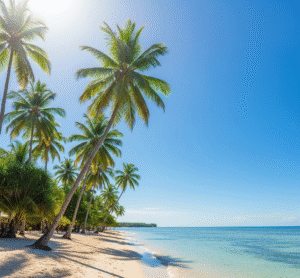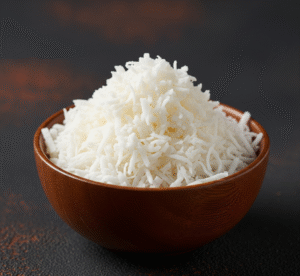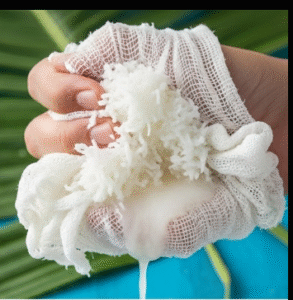Introduction: Staple of the Pacific Islands
Picture a soft ocean breeze, palm trees swaying under a golden sunset, and waves gently rolling onto white sandy shores. This image often defines paradise—and at its heart stands the coconut tree (Cocos nucifera).
But this tree is more than just a tropical icon. For the people of the Pacific Islands, the coconut is known as the “Tree of Life”. It has provided food, shelter, tools and crafts for thousands of years. To truly understand Pacific Island cultures, we must first understand the coconut.

Ancient Origins: How Coconuts Traveled Across the Pacific
Carried by the Austronesian Seafarers
While the exact origin of the coconut is still debated—some theories trace it to Asia, others to South America—most evidence points to its domestication by Austronesian seafarers in Island Southeast Asia.
These skilled navigators brought coconuts with them on long ocean voyages as “canoe plants”—plants essential for life and settlement on new islands.
It is also believed that the coconuts floated across the ocean. Because they are light the wind and ocean currents carried them to different islands. This helped coconuts spread to many tropical places around the world inlcuding the Pacific.
Genetic Clues
Modern genetic studies show that there are two main types of coconuts: the Pacific and the Indo-Atlantic varieties. Pacific coconuts are usually shorter and self-pollinating, and their spread matches the migration routes of early Austronesian people.
Incredibly, coconut varieties even made their way to South America, long before European explorers arrived—suggesting early pre-Columbian ocean contact between cultures across the Pacific.
Environmental Benefits
Natural Resilience and Ecological Harmony
Coconut trees thrive in salty, sandy environments. They withstand tropical storms, floods, and heat. Their strong root systems help protect coastlines from erosion and support biodiversity.
Coconut in Modern Pacific Culture
Traditional and Contemporary Expressions
Even today, the coconut remains a vital part of daily life. In cultural festivals, coconut shells and fibers are used in traditional costumes and dances, symbolizing authenticity while connecting modern performances to ancestral roots.
Crafting with Coconuts: Every Part Has a Purpose
Island communities have long used every part of the coconut tree:
Husks: Turned into ropes for building homes and boats, or woven to wear with traditional clothing.
Leaves: Woven into baskets, mats, fans, and roofing.
Shells: Shaped into bowls, utensils, cups, and jewelry.
These handmade items reflect local artistry and cultural pride, turning a simple fruit into tools for both survival and expression.
Coconut Oil and Body Care
The coconut is useful not just for food and tools, but also for personal care. It offers nature’s gifts for both the body and mind. Coconut oil, called lolo, is a key part of how people take care of their hair and skin and their health. It’s widely used to style hair and put on skin, especially during special events. Often, it’s made to smell nice with sweet-smelling flowers, turning it into a natural perfume.
Uses in the Pacific Island Kitchen
From Hydration to Flavor
Young green coconuts hold nutritious, hydrating water, naturally rich in electrolytes—a healthy alternative to processed sports drinks.
As coconuts mature, their meat thickens and becomes a key ingredient in countless island dishes. It can be eaten raw, grated, or turned into creamy sauces and oils.
Classic Pacific Dishes Featuring Coconut
Some beloved traditional dishes include:
Palusami (Samoa): Taro leaves baked with coconut cream. Also kown as Lu in Tonga.
‘Otai: well known fruity beverage traditionally made with grated watermelon and coconut. Different fruits are used or added to this drink for more flavor and deliciousness.
’Ota ’ika (Tonga): Fresh raw fish cured in lime and coconut cream.
Pani popo – baked rolls and topped with coconut cream.
These recipes aren’t just delicious—they provide essential fats, energy, and cultural connection.
A Versatile Ingredient
Coconuts are used to make:
Coconut milk and cream
Coconut oil
Coconut sugar (from the tree’s sap)
Coconuts can be used in many ways when cooking, both in old traditional recipes and new mixed-style dishes, making them very important in Pacific Island food.
Coconut and Tourism: A Living Symbol
In today’s tourism industry, coconuts still symbolize the spirit of the Pacific:
Spas use local coconut oil in wellness treatments.
Souvenir shops sell coconut crafts—hats, jewelry, bowls, and more.
Cultural tours often include coconut harvesting demonstrations, showing visitors how every part of the tree is used.
These practices give tourists a deeper connection to local traditions, while supporting sustainable livelihoods.
Conclusion: A Tree That Tells a Story
The story of the coconut is also the story of the Pacific people. From its early cultivation and epic journey across oceans to its role in food, shelter, health, and culture—the coconut tree truly earns its title as the “Tree of Life.”
Its deep roots in Pacific history and ongoing relevance today show us how nature, when respected and understood, can sustain entire communities—body, mind, and soul.


